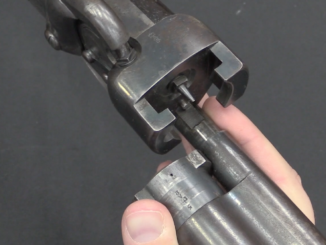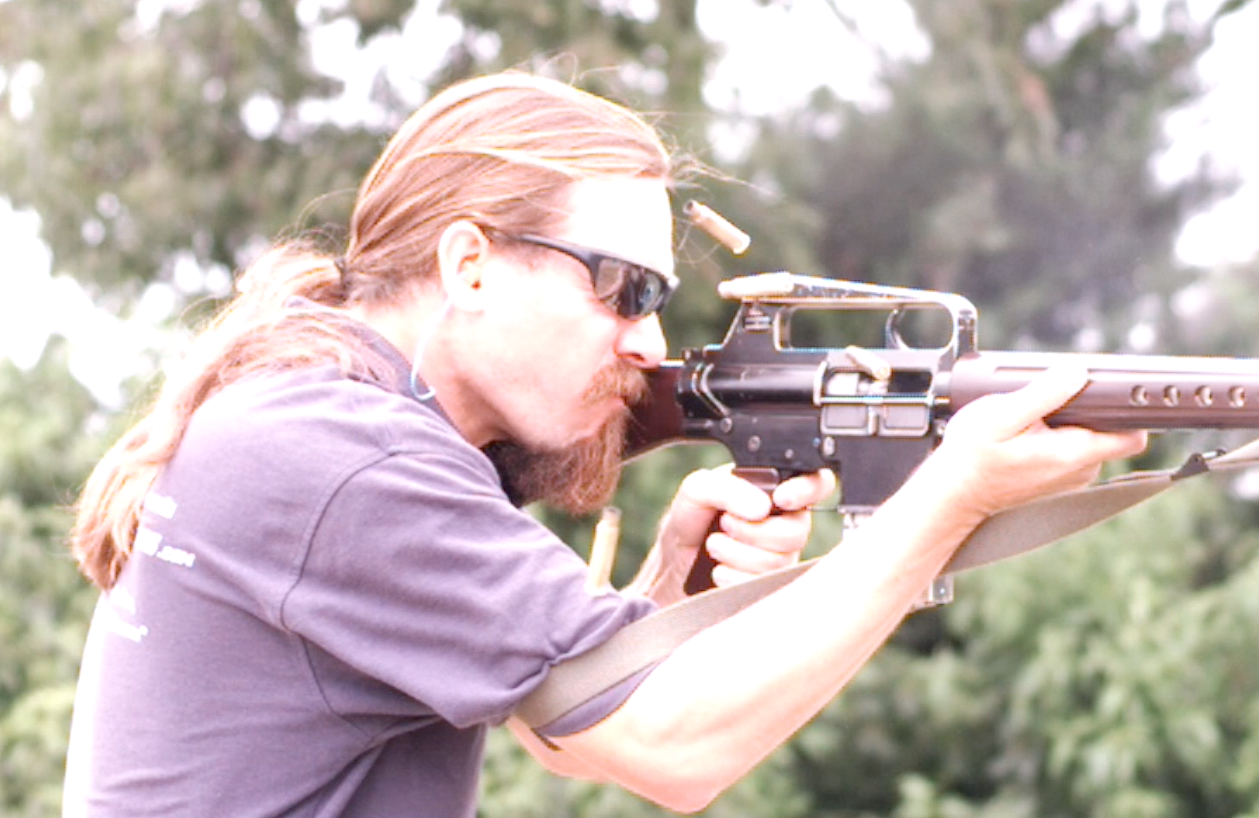Lot 1173 in the September 2019 RIA auction.
William Marston was born in the UK in 1822 and emigrated to the US in the 1830s with his father, who was a gun smith. William became a naturalized citizen in 1843, and in 1844 went to work for his father in the family business. He would later open his own shop, and became successful making a wide variety of firearms – mostly concealable pocket pistols – until his death in 1872.
This is one of his 3-barrel derringers, with a pretty neat auto-indexing system. This one is in .32 rimfire with 3” barrels, although 4” barrels and .22 rimfire versions were also made. Production began in 1858, but really picked up with the addition of an extractor in 1864. That improved model would see some 3300 examples made.




Close encounters get apparently confusing to be modest in expression. Having three goes at it were surely of help, but not guarantee of success either. Good thinking on part of designer, to be sure.
People in this day and age are completely overtaken with the idea of “stopping power” and spoiled by modern medicine. The average human being was smaller, less robust, and more prone to infection than anybody in today’s First or even Second World. A pistol in those days was practically a contact weapon, a puncture in any part of your torso guaranteed not just immediate suffering and incapacitation but eventual painful death from peritonitis or hemorrhage, and a hole in the head then was no less fatal than a hole in the head now. Simple display of this, or even the smallest Deringer, would be enough to dissuade any sword-, cosh- or even sword-wielding footpad. Should any actual combat start, with this in one hand and a stout cane in the other, a gentleman would have a fair chance of not just survival but triumph, perhaps even against a gang. This piece strikes me as a most viable urban “dissuader” for that time and place, preferable to a revolver (flatter, no cylinder flash, not so many places to leak oil into my silk pocket), possibly as reliable, and mechanically quite interesting. Thanks to Mr. M for showing it to us.
That’s knife-, cosh-, or even sword-bearing, sorry. Or pike or rocks or fists, I suppose.
“(…)spoiled by modern medicine(…)”
25th President of the United States was assassinated by man armed with .32 caliber revolver, who managed to fire two shots at short distance. This did not cause immediate death, but even despite help of best of surgeons, it proved eventually fatal.
for more data see: https://en.wikipedia.org/wiki/Leon_Czolgosz
The President’s son died from a tennis blister in 1924. A little mold changed the world.
I hope some descendant of William Marston, researching their family history, finds this. There are enough dates to make confirmation more secure than most nutty family diggers would accept. The fact the company lasted decades means there will be lots of good leads to follow.
Knowing what became of the Marston’s would be grand, for all sorts of reasons.
It has a ratcheting ‘hand’ mechanism, but no positive index. I don’t think anyone would be too keen on a revolver with just a bit of friction keeping everything lined up…
The patent date stamped over the receiver; 26 May, 1857 , S.N.17386 is not belonged to this metal cartridge derringer but refers to a muzzle loading three shot firarm named as a “Revolver”.
It seems this spesific pistol had not a registered patent of its own.
It also seems that the indicator number “0” was intended to warn the user to select the firing pin manualy to any other numbered barrel since the mechanism seen in the video has no clue to accomplish that work through actuating the hammer.
Well thought design for that age. IMHO.
I believe the “0” setting may have been intended as a manual safety. one hat is activate automatically when the weapon is in battery and must be manually released to fire it.
Any hammer-fired firearm without a rebounding hammer is vulnerable to an AD if something bumps the hammer, forcing the firing pin into the primer of a chambered round. And with a three-shot arm like this, the usual expedient of leaving an empty chamber “under the hammer” reduces your available capacity by one third, which is a bit more than losing 16% with “five beans in the wheel” on a Peacemaker.
Seen in this light, the “0” setting, which keeps the firing pin completely away from any primer rim, makes very good sense from a safety standpoint.
cheers
eon
Thanks Eon… Good point… Provided with keeping all the chambers loaded.
Besides, might it be a counter about how many rounds remaining… Instead of an indicator of which barrel to be discharged… Or intended for all; Safety, hammer set warning and counter…